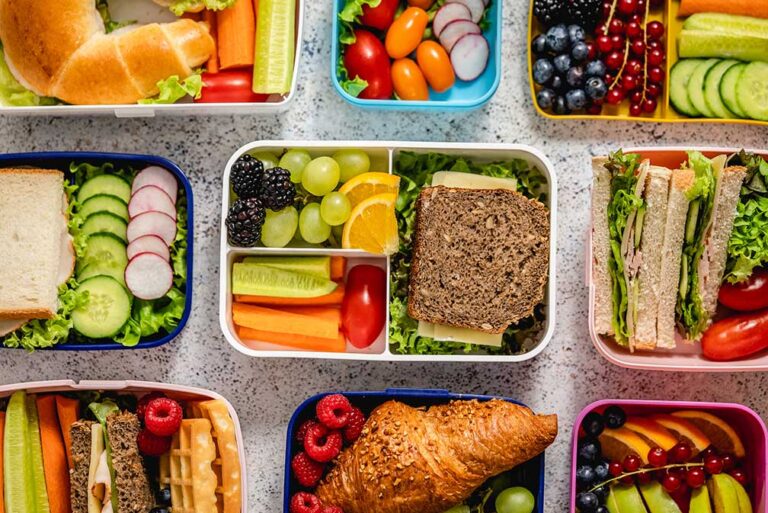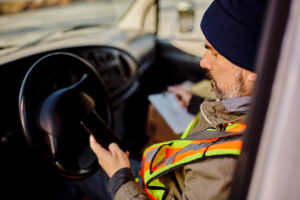Ask 50 truck drivers what you should plan to bring along when you make your first solo trip and you’ll likely get 50 different answers, including a few that start, “Well, it depends.” That’s a good place to start.
Depending on the truck you’re driving — whether it’s assigned by the carrier you work for or one you bought to launch your business — you’ll need to know how much storage space is available.
In addition to a place to stow your clothing and personal items, you’ll need to know if there’s cold storage for food and drinks. Some trucks are equipped with small refrigerators and electric inverters that supply 120-volt electricity for any appliances you’ll use. In others, you’ll need to supply a cooler, either one that you fill with bags of ice or an electric one that plugs in.
Once you know how much space you have, it’s time to start packing.
What will you wear?
You’ll need enough clothing to last the duration of your trip — or at least until you have time and a place to wash them. Most truck stops have laundry facilities, but they aren’t always available when needed and they can be expensive to use on a regular basis.
Some clothing might be worn multiple days, like a pair of jeans (as long as you don’t get overly dirty or sweaty). Fresh undergarments and a clean shirt can help you feel cleaner even when you can’t shower.
You’ll need sturdy footwear, too. Whether you choose boots or shoes, they should provide plenty of support when you’re climbing in and out of the truck or walking around on questionable surfaces.
It’s a good idea to bring a jacket along, even in summer. In certain parts of the country, especially at high elevations, it can get chilly any time of year. It’s always better to have a jacket and not need it than the other way around. Just for good measure, add a hat and some gloves, too.
What will you eat?
When it comes to meals on the road, one of the fastest ways to quickly go broke (and ruin your health) is to eat every meal at restaurants and truck stops. Plus, you’ll eventually find yourself in a situation where a restaurant isn’t available at the time you need it.
If you have a refrigerator, pack some lunch meat, cheese, condiments, fruit/veggies — whatever you like. You can make a few days’ worth of sandwiches for the cost of a single truck stop meal.
Be sure to pack some non-perishable food, too. Cans of soup, stew, chili or whatever you like; tuna is great for protein. Packaged protein bars or crackers and peanut butter come in handy when there’s no time to prepare something.
You don’t have to stick to cold sandwiches, either. There are several ways to cook in your truck. You can find 12-volt appliances to heat soups, make coffee and even pop popcorn, but the most popular appliance is a small microwave oven. Consider the capacity of the inverter in your truck (you may need to provide your own the one you provide), and make sure it’ll handle the voltage requirements of your microwave. Paper plates and bowls make cleanup a snap.
Don’t forget the bottled water. Even in cold weather, dehydration can be a problem. Air conditioning removes moisture from the air and, while doing so, removes it from your body, too. Carry your favorite non-alcoholic beverages (the more water, the better).
Where will you sleep?
Bunk mattresses come in all sizes, and bedding can be expensive. Plain flat sheets fit most bunks but tucking them in constantly can be inconvenient. Measure your mattress carefully, and don’t be afraid to get creative. You can make a “pillowcase” that fits some mattresses by folding a king-size flat sheet in half and sewing the long side and one short side. It’ll stay tucked and the mattress can be flipped to the unused side.
You’ll also need blankets or a comforter. A large sleeping bag can do double duty and keep you from coming in contact with the mattress. A favorite pillow will help you sleep better.
What else will you need?
Unless you’ll be home every day, you’ll need toiletries. Buy a duplicate of each product you use at home, such as shaving cream, soap, shampoo, deodorant and toothpaste. Baby wipes are great when you don’t have access to soap and water! Household medications like pain killers or antacids are good to add.
Most truck stops have a 24-hour C-store available — but beware. The “C” stands for “convenience,” not “cheap.” Buy your toiletries, your food and beverages and any other items when you’re at home, or you can stop at a regular grocery or box store. Use the C-store when other choices aren’t available.
If you take any prescribed medication, make sure you bring enough for your expected time out, and then some more. It’s best to keep it in the original prescribed bottles to avoid any suspicion of illegal possession.
How will you pay for things?
Think about how you intend to pay for things while you travel. Many drivers use cash, taking advances from their fuel cards as needed. This practice can deplete the next paycheck in a hurry. Using debit cards to pay for purchases is an option but drawing cash from an ATM often results in charges both from the truck stop and your bank. Credit cards carry interest fees and often result in surcharges when used.
However you pay, it’s a good idea to stash some cash somewhere in your truck so that if you lose your wallet or purse, you’ll have something to fall back on. Some drivers carry blank checks to pay for any repairs without incurring credit card fees.
Anything else?
Electronic devices are a part of daily life, and you’ll need your cellphone. You may also need a laptop or tablet, both for record-keeping and for communication. Before you leave home, download any apps you might need on the road.
If you’ll need your own GPS, bring that, too. Mapping software on phones often doesn’t provide trucking information. Make sure you have any login information and passwords you’ll need to log into any accounts you’ll need to access while on the road.
Your carrier may provide you with a copy of the Federal Motor Carrier Safety Regulations (FMCSRs) and an Emergency Response Guidebook (ERG). Store these where you can get at them, if needed. If you haul hazardous materials, keep the ERG with the load paperwork.
Being on the road has its own difficulties, but you can be as safe and comfortable as possible with a little planning and careful packing.
Safe travels!
Cliff Abbott is an experienced commercial vehicle driver and owner-operator who still holds a CDL in his home state of Alabama. In nearly 40 years in trucking, he’s been an instructor and trainer and has managed safety and recruiting operations for several carriers. Having never lost his love of the road, Cliff has written a book and hundreds of songs and has been writing for The Trucker for more than a decade.














